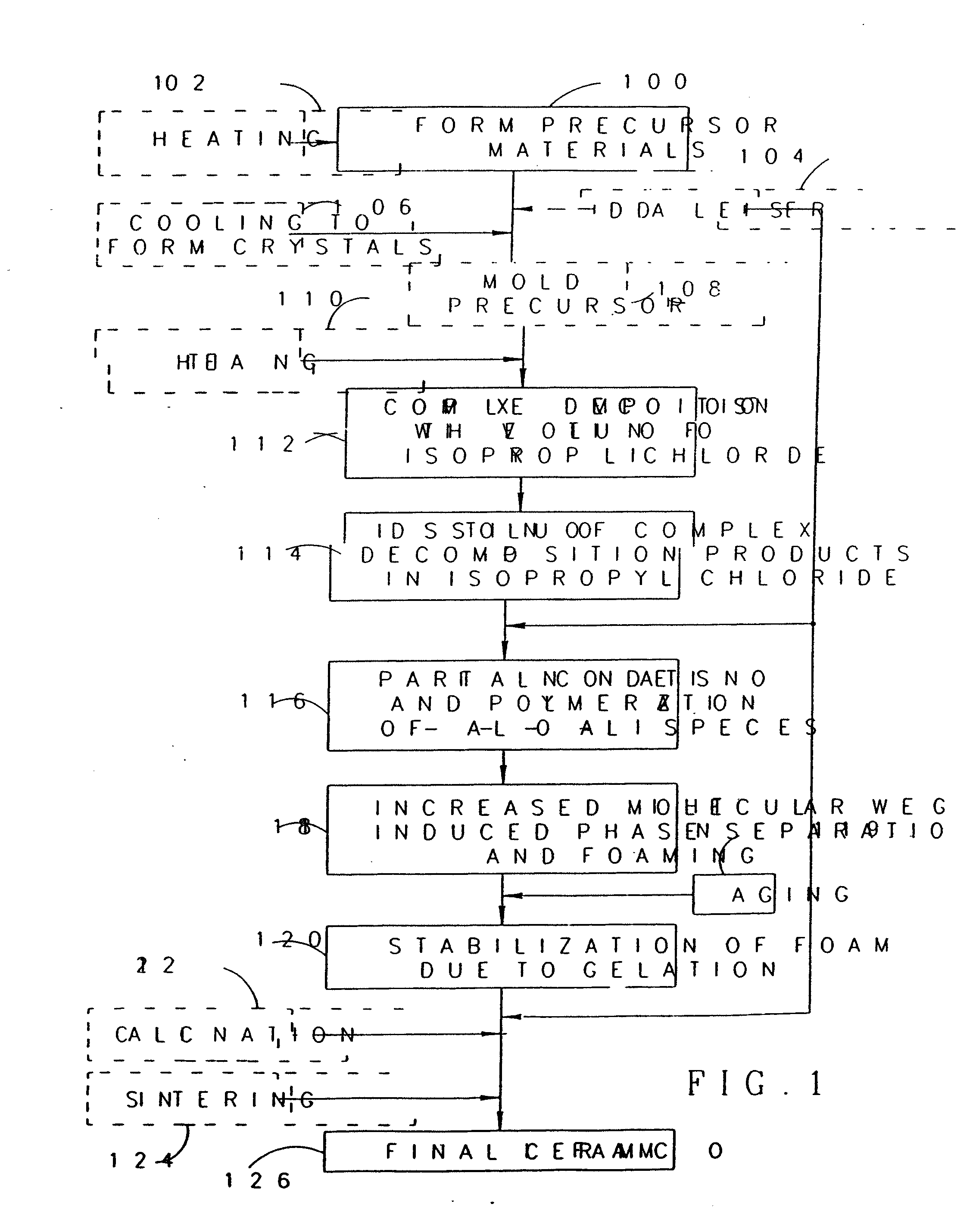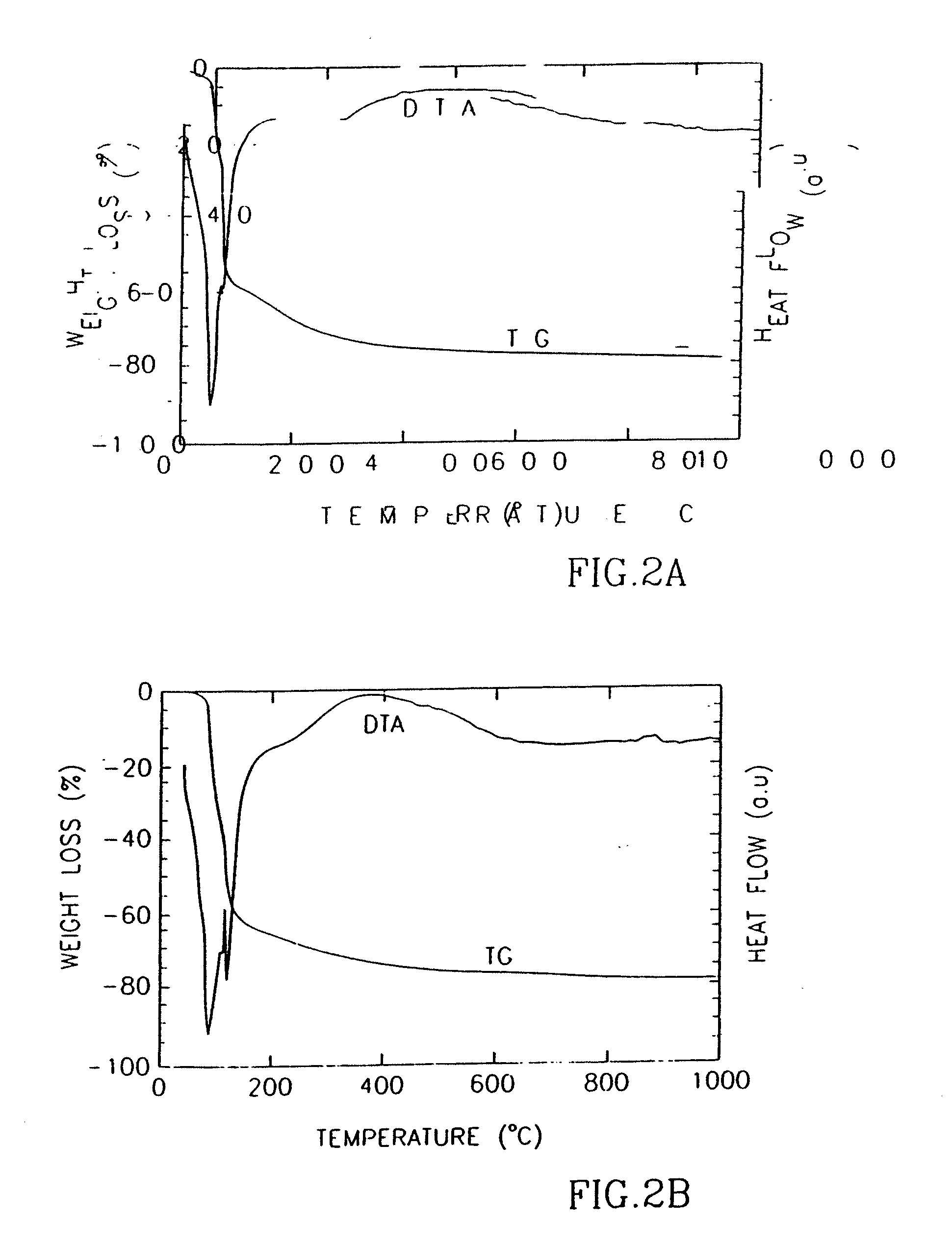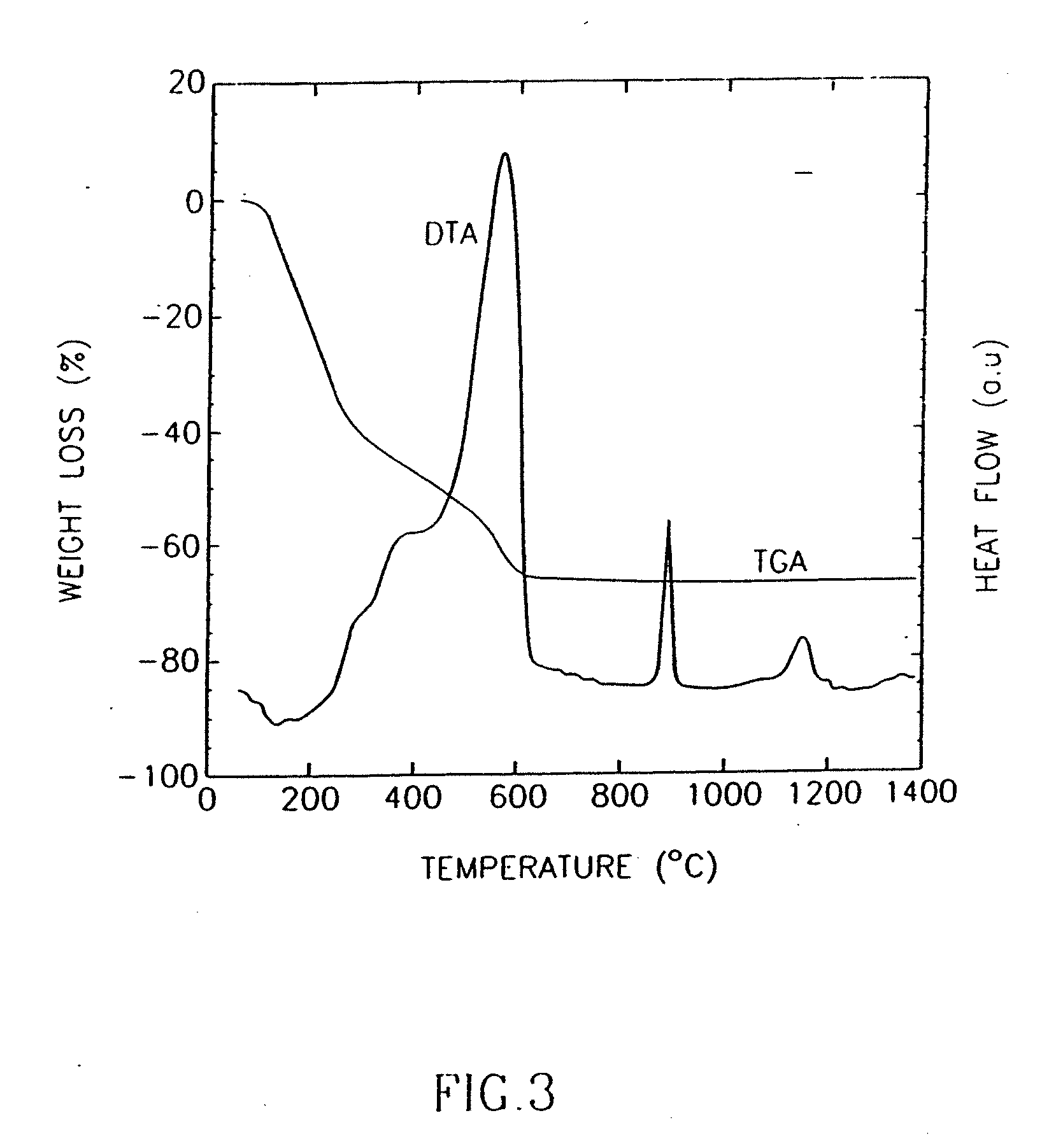Method of producing ceramic foams
a ceramic foam and production method technology, applied in the field of ceramic foams, can solve the problems of increasing the cost of the foam manufacturing process, not using the combination of gas and liquid phase that is used in the production method of blowing agent foam, etc., and achieves the effects of convenient production, high porosity, and simple in situ preparation
- Summary
- Abstract
- Description
- Claims
- Application Information
AI Technical Summary
Benefits of technology
Problems solved by technology
Method used
Image
Examples
Embodiment Construction
[0027] Described below are several experiments that illustrate methods of producing ceramic foams from a precursor or a mixture of precursors. Each of these precursors contains a ceramic-forming element. In accordance with the invention, the precursor (or mixture of precursors) liberates at least one volatile reaction product during an inorganic gelation process. The experiments described below are for illustration purposes. However, the invention is not limited to these particular forms.
[0028]FIG. 1 summarizes the stages involved in the mechanism of foam formation from the crystals of the AICI3(Pri2O) complex. Several optional processes are represented by dashed boxes. The details of these and the other steps in the process are discussed later.
[0029] The process of FIG. 1 may utilize crystals of the AICI3(Pri2O) complex as the only precursor (blocks 100, 102 and 106). Controlled heating is the only “force” acting on the system. The heating accelerates the transformation of the cr...
PUM
| Property | Measurement | Unit |
|---|---|---|
| porosity | aaaaa | aaaaa |
| boiling point | aaaaa | aaaaa |
| temperature | aaaaa | aaaaa |
Abstract
Description
Claims
Application Information
 Login to View More
Login to View More - R&D
- Intellectual Property
- Life Sciences
- Materials
- Tech Scout
- Unparalleled Data Quality
- Higher Quality Content
- 60% Fewer Hallucinations
Browse by: Latest US Patents, China's latest patents, Technical Efficacy Thesaurus, Application Domain, Technology Topic, Popular Technical Reports.
© 2025 PatSnap. All rights reserved.Legal|Privacy policy|Modern Slavery Act Transparency Statement|Sitemap|About US| Contact US: help@patsnap.com



